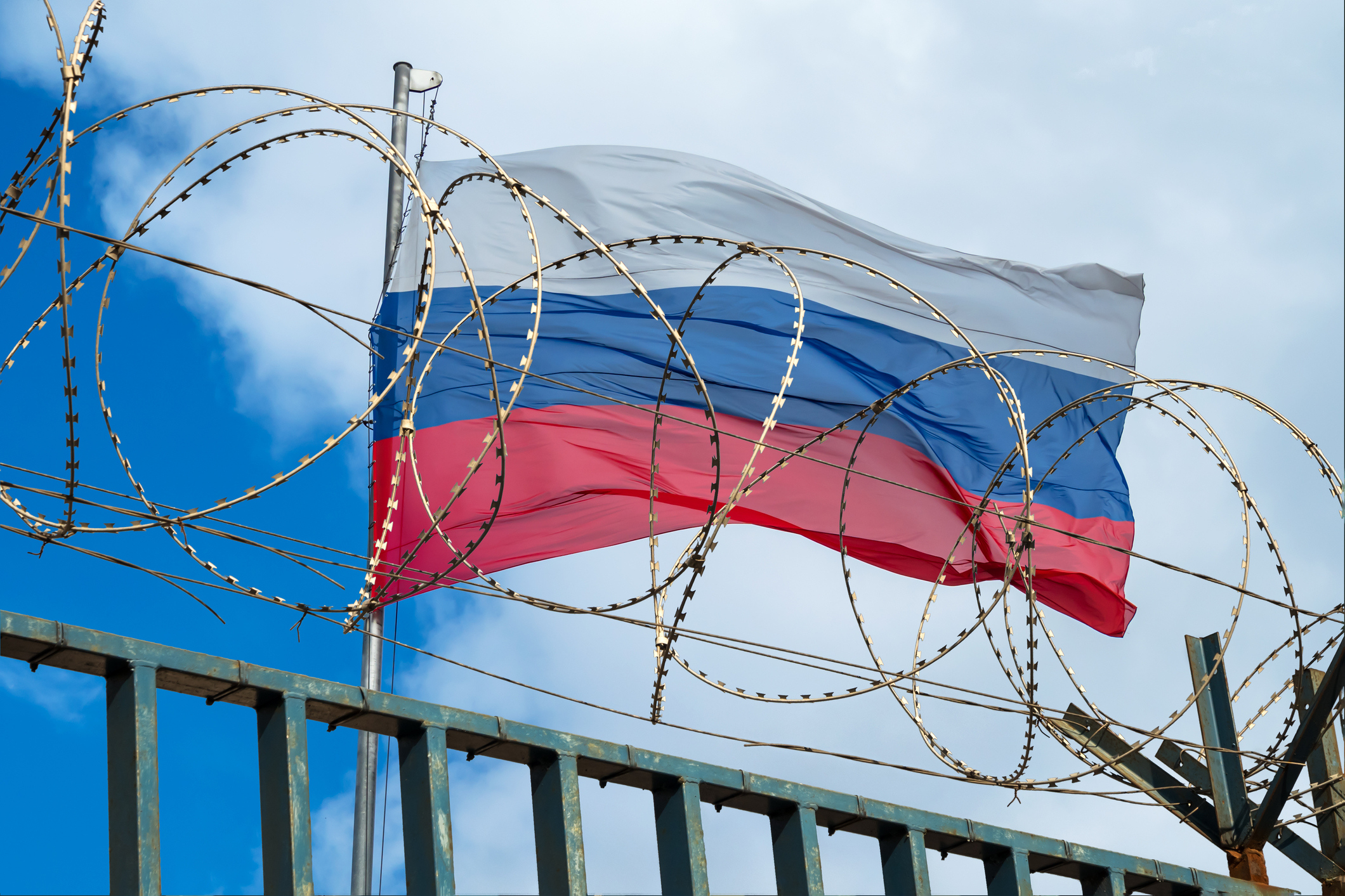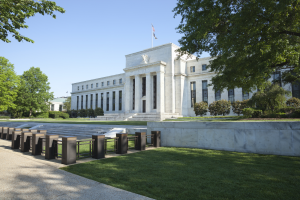Sanctions on Russia are isomorphic to a strict policy of trade protection, industrial policy, and capital controls.
Most assessments of the effectiveness of sanctions on Russia, with some exceptions, hold them to have been highly effective. My new INET Working Paper analyzes a few prominent Western assessments, both official and private, of the effect of sanctions on the Russian economy and war effort. It seeks to understand the goals of sanctions and bases of fact and causal inference that underpin the consensus view. Such understanding may then help to clarify the relationship between claims made by Western economist-observers and those emerging from Russian sources – notably from economists associated with the Russian Academy of Sciences (RAS). As we shall see, Russian views parallel those in the West on many matters of fact yet reach sharply different conclusions.
In the most important private assessment of sanctions, Sonnenfeld et al present a stark, even lurid, case for the “devastating” effect of sanctions, of business “retreats,” and of emigration and capital flight on the Russian economy as a whole in the year since the Ukraine war escalated in late February 2022. Their case boils down to the following major propositions:
- the fall in oil and gas export volumes hurts Russia more than its former trading partners (mainly in Europe), since Russia sold to the EU a larger share of these commodities in Russia’s exports than the share of Russian imports in the total imports of the EU. Having lost the EU market, Russia’s prospects for new customers, notably in Asia, are limited.
- Curtailment of equipment imports, especially in high technologies, and of foreign industrial activity has had dramatic effects – for instance forcing a nearly-complete shutdown of the automobile industry in Russia.
- Emigration of skilled personnel and departure of foreign managers, engineers, and others whom Russia “cannot afford to lose.”
- Capital flight, emigration of “high net worth persons,” serious falls in the stock values, and other financial indicators for major Russian resource producers, alongside an argument that the value of the ruble, which rebounded quickly after a sharp drop in February 2022, is maintained only by manipulation in a low-liquidity market.
Examining each of these propositions, we find no major errors of fact. The issue in each case is one of interpretation. Specifically:
- Russian oil and gas revenues, and net exports, rose in 2022 as higher prices offset declining volumes. But even were this not the case, the main effect of export revenues is on reserves, not on the capacity to import or current activity. Thus oil and gas revenues have little bearing on the internal functioning of the Russian economy. They do bear on the state budget, but this is a matter of Russia’s internal tax structure, which is subject to change.
- There were major shocks to the import of consumer goods and to the domestic production of many non-durables when sanctions were escalated in 2022. However, after a period of adjustment substitutes can usually be found or produced, while the physical capital left behind by foreign enterprises exiting Russia is sold off to domestic buyers at a steep loss. This is a major transfer of wealth from foreign to Russian firms, and it opens large market spaces that were previously dominated by Western companies.
- The effect of skills lost through emigration is unquantified and assessments do not account for the much larger inflows of personnel from Ukraine. More important, it is highly probable that the most-skilled emigrants are relatively young, and as the educational system that produced them is intact, they will be replaced in due course.
- The financial management of the Russian economy under sanctions has seen the payment system replaced and the ruble mostly stabilized. Sanctions against wealthy individuals have a dual effect. In some cases oligarchs emigrated, losing influence within Russia. In other cases they returned and brought capital back, seeking to protect assets from seizure. The net result is to align those oligarchs who remain active within Russia with the policies and objectives of the Russian state.
By contrast with most private assessments, official statements of the goals of sanctions emphasize two narrow objectives: to undermine Russian military-industrial capacities and to “defund the war.” They do not focus on the effect on the Russian economy and civilian population.
The question of the effect of sanctions on “critical military inputs” is not one that can be answered from public sources. However, while it is possible that some key components for military goods were procured outside Russia, common sense suggests that war preparations would have included stockpiling a substantial supply – as well as reverse engineering and import substitution. Failure to take these steps would have amounted, at the very least, to gross negligence. The funding argument, as noted above, rests on a misconception. In addition, the policy of sanctioning individuals – if its goal was to bring pressure to bear on the Russian state – must be judged a failure.
A technical analysis from a senior economist at the US Treasury Department examines the effect of sanctions on Russia’s long-term economic prospects, and may be taken as representative of the official view, including, one surmises, intelligence assessments. This analysis rests on the familiar neoclassical production function: capital, labor, technology, and the burdens of state intervention. These factors, working together, are stated to have caused a “grim” decline in Russia’s prospects, such that the economy by 2030 will be 20 percent smaller than it would otherwise have been.
This application of growth theory appears to neglect two basic mainstream concepts: the profit motive and possibilities for technical substitution. By vastly reducing the presence of non-Russian firms on Russian soil, while restricting energy and other resource exports from Russia, so that resource prices within Russia have remained stable, sanctions have had a favorable effect on the potential profitability of Russian businesses. The Treasury assessment states that Russian firms will not be capable of taking advantage of this potential. But there is no evidence for this view, other perhaps than impressions of the Soviet past and the chaos of the early transition years. Such impressions are now decades out of date.
Finally, this essay reviews a recent assessment from the Russian Academy of Sciences (RAS). On matters of fact, there is a striking agreement between this assessment and the information published in the West; the sanctions are described as having “led to large-scale crisis processes that affected almost all areas of the Russian economy.” However, the RAS report notes the effective early crisis management by the Russian state, the “relatively favorable” decline of only 0.4 percent in GDP in the first half of 2022 (at an annual rate), and signs of a turnaround already in some key indicators, including business investment. The RAS report contains numerous cautions of the dangers ahead, including a blunt warning about the state budget, yet with recommendations on how the challenges can be met.
It is too early to state definite conclusions. However, a very recent Wall Street Journal analysis – coauthored by Evan Gershkovich, now detained in Russia – takes the view (expressed in the headline) that the Russian economy is “starting” to come apart. At a minimum, this logically contradicts any notion that it was collapsing already last year, under the first shock of the application of sanctions. It, therefore, undermines both the Sonnenfeld and the Treasury theses, suggesting that while the facts in those analyses appear impeccable, their conceptual underpinnings are problematic.
The contrast between the effects of sanctions on Russia and their effects on Europe is worth noting. With respect to Russia, resource prices remained stable, the internal market for Russian firms grew, physical assets were transferred to Russians at preferential rates, and financial assets were retained in the country that might otherwise have gone abroad. With respect to Europe, imported resource prices soared, markets for exports fell, physical assets had to be sold cheaply and financial assets fled to the United States. Thus one would expect improved market conditions in Russia and deterioration in Europe – and this is what we presently observe.
Could Russia have achieved such effects on its own? As late as early 2022, the Russian economy was deeply penetrated by foreign firms in virtually all sectors except the military. The oligarchs, deeply Westernized with vast investments and assets outside the country, were highly influential. Neoliberal economic ideas were prominent, with challenges from academic institutions favoring a stronger state industrial policy still at that time in a relatively weak position. The legal, political, institutional, and ideological climate would have, almost surely, prevented the Russian state from taking the steps that were imposed upon it by the sanctions.
We conclude that when applied to a large, resource-rich, technically-proficient economy, after a period of shock and adjustments, sanctions are isomorphic to a strict policy of trade protection, industrial policy, and capital controls. Such policies have been applied with success in other countries. They are policies that the Russian government could not plausibly have implemented, even in 2022, on its own initiative. Their success or failure in Russia will be determined over time. However, strong claims for the effectiveness of sanctions in this case, so far, do not appear warranted.







